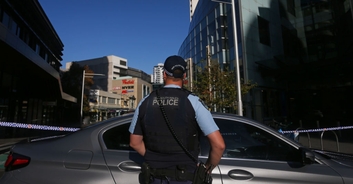Divers exploring Belize’s iconic Great Blue Hole made a shocking discovery that alerted people to the state of our planet, as well as more hidden secrets.
The Great Blue Hole is an expansive marine sinkhole lurking off the Belizean coast, stretching a staggering 318 meters (approximately 1043 feet) across and plunging 124 meters (about 407 feet) deep.
In 2018, an expedition, backed by billionaire tycoon Richard Branson, dared to explore the enigma of the Great Blue Hole. Although completed in 2018, this daring venture has recently resurfaced, captivating audiences anew with its startling revelation about our human footprint.
As reported by the New York Post, a team from Aquatica Submarines embarked on a descent to fathom the depths of the Blue Hole. Their intention was to chart a comprehensive 3D map of the sinkhole's interior. However, as they delved deeper, an unsettling spectacle awaited them.

During their descent, which included the intrepid Branson himself, the crew was treated to visits from marine life – sea turtles, reef sharks, and majestic corals. Yet, as they approached the 90-meter (295-foot) mark, a sense of foreboding descended along with them.
Erika Bergman, a member of the expedition, recounted their encounter with a noxious layer of toxic hydrogen sulfide, effectively sealing off deeper access and cutting off the oxygen supply.
"We found conchs and conch shells and hermit crabs that had fallen into the hole and suffocated," she said.
Amidst the discovery, the team stumbled upon a two-liter Coke bottle, venturing an astonishing 407 feet below the surface, and a lost GoPro camera still full of a holidaymaker's photos.
Amidst the debris, lay the remains of two human divers, believed to be those who vanished during a previous expedition. A poignant decision was made not to disturb their resting place. As Bergman stated: "It’s very dark and peaceful down there, just kind of let them stay," while adding that the team let the Belize government know about the bodies.
Not everything was so grim, as the expedition unveiled ancient stalactites, reminiscent of icicles adorning the ceilings of caves. This stunning discovery painted a vivid portrait of the Great Blue Hole's past - a time when it was a dry cave, teeming with prehistoric life.
Scientists believe that the cavity was born during the waning days of the last Ice Age, some 14,000 years ago. As the Ice Age's grip loosened, and the seas rose, the cave eventually succumbed to the rising water levels.
Sadly, it seems as though the Great Blue Hole won't be around forever as daily cascades of sand tumble into the chasm, meaning that it might one day fill up.
Branson, the driving force behind the exploration, noted that it drew attention to the climate crisis. Describing the expedition as "one of the starkest reminders of the danger of climate change [he had] ever seen," Branson underscored the vital importance of recognizing humanity's impact.
"The Blue Hole is made of a complex system of caves that once formed on dry land. It is proof of how oceans can rise quickly and catastrophically," Branson said.
"The real monsters facing the ocean are climate change - and plastic. Sadly, we saw plastic bottles at the bottom of the hole, which is a real scourge of the ocean. We’ve all got to get rid of single-use plastic."












